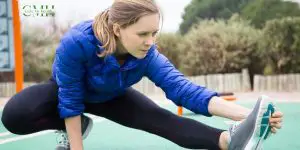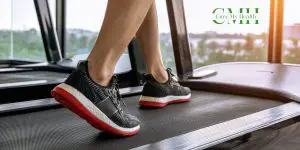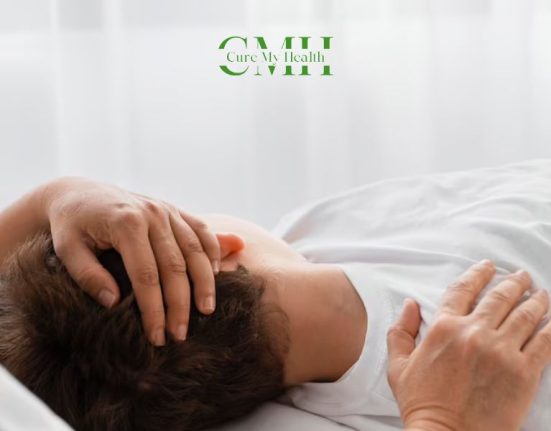Introduction
Walking abnormalities, also known as gait abnormalities, refer to any deviation from the normal walking pattern or gait. A person’s walking pattern is a complex interaction of various body systems, including the musculoskeletal, neurological, and cardiovascular systems. Any disruption to these systems can result in changes to the walking pattern, leading to abnormalities in gait. Walking abnormalities can be caused by a variety of factors, including medical conditions, injuries, or neurological disorders. These walking abnormalities can affect a person’s mobility, balance, and overall quality of life. Treatment may include physical therapy, medication, assistive devices, or surgery, depending on the underlying cause of the abnormal gait. It is important to seek medical attention if you experience any changes in your walking pattern or have difficulty walking. Early intervention can help prevent further complications and improve overall mobility and function. Understanding the different types of walking abnormalities and their causes can help individuals and healthcare professionals identify and address these issues early on.
Walking abnormalities refer to any deviation from the normal walking pattern or gait. These abnormalities can be caused by a variety of factors, including medical conditions, injuries, or neurological disorders.

Here are some common types of walking abnormalities:
- Ataxic gait: Ataxic gait is characterised by a wide, unsteady gait and can be caused by neurological disorders such as multiple sclerosis or cerebellar degeneration.
- Antalgic gait: Antalgic gait is characterised by a limp or shortened stride and is often caused by pain, such as in the case of a foot or leg injury.
- Trendelenburg gait: Trendelenburg gait is characterised by a side-to-side wobbling motion and is often caused by weakness in the hip muscles.
- Steppage gait: Steppage gait is characterised by a high-stepping gait and is often caused by weakness or paralysis of the muscles that lift the foot.
- Spastic gait: Spastic gait is characterized by stiff, jerky movements and is often caused by neurological conditions such as cerebral palsy or multiple sclerosis.
- Parkinsonian gait: Parkinsonian gait is characterised by a shuffling gait and reduced arm swing and is often caused by Parkinson’s disease.
- Waddling gait: Waddling gait is characterized by a rolling motion of the hips and is often caused by conditions such as muscular dystrophy or hip dysplasia.
- Scissor gait: Scissor gait is characterized by a crossing of the legs while walking and is often caused by spasticity or weakness in the leg muscles.
Walking abnormalities can affect a person’s mobility, balance, and overall quality of life. Treatment may include physical therapy, medication, assistive devices, or surgery, depending on the underlying cause of the abnormal gait. It is important to seek medical attention if you experience any changes in your walking pattern or have difficulty walking. Early intervention can help prevent further complications and improve overall mobility and function.
Top 6 things we need to know about our walking pattern in day to day life
Our walking pattern, also known as gait, is an important aspect of our physical health and well-being. Here are some things you may want to know about your walking pattern:
1.Gait analysis: Gait analysis is the study of human motion, particularly the way we walk. It involves observing and measuring the movement of our limbs and body while walking, to assess our gait and identify any abnormalities. Gait analysis is the study of human motion, particularly the way we walk. It involves observing and measuring the movement of our limbs and body while walking, to assess our gait and identify any abnormalities. Gait analysis can be helpful in diagnosing and treating various musculoskeletal, neurological, and orthopaedic conditions.
There are two main types of gait analysis:
- Visual gait analysis
- Instrumented gait analysis.
Visual gait analysis involves observing a person’s gait with the naked eye and assessing any abnormalities. Instrumented gait analysis involves using advanced technologies such as sensors, cameras, and force plates to measure the movement and forces exerted during walking. Gait analysis can be performed by various healthcare professionals, including physical therapists, orthopaedic surgeons, and neurologists. The evaluation typically involves a series of tests and measurements to assess various aspects of gait, such as stride length, step width, foot pressure, joint angles, and muscle activity. One of the most common uses of gait analysis is to assess and treat musculoskeletal conditions such as knee pain, hip pain and foot and ankle problems. For example, gait analysis can help identify the cause of knee pain, such as overpronation of the foot or an uneven stride, and guide the use of orthotics or exercises to correct the problem.
Instrumented gait analysis is often used in research settings to study the biomechanics of walking and identify new ways to improve gait and reduce the risk of injury. For example, researchers may use gait analysis to study the effects of different footwear or walking surfaces on gait, or to identify the biomechanical factors that contribute to falls in older adults. Gait analysis can also be helpful in diagnosing and treating neurological conditions such as Parkinson’s disease, multiple sclerosis, and stroke. Gait abnormalities are common in these conditions and can lead to falls, balance problems, and reduced mobility. Gait analysis can help identify the specific gait abnormalities and guide the use of medications, physical therapy, or assistive devices to improve gait and reduce the risk of falls.

2. Normal walking pattern: When walking normally, our body weight is shifted from one foot to the other in a rhythmic motion. Our arms swing back and forth in coordination with our leg movements. Our head stays level and our eyes look straight ahead.
Walking is a complex and coordinated movement that involves various muscles and joints working together to move the body forward. Understanding the normal walking pattern, also known as gait, is important for maintaining good physical health and preventing injuries.
As the foot lifts off the ground, the swing phase begins, and the other foot moves forward. During the swing phase, the knee flexes and the foot clears the ground, allowing it to swing forward freely. The swing phase ends when the foot touches the ground again, and the cycle repeats. There are several factors that can affect the normal walking pattern, such as age, weight, fitness level, and underlying health conditions. For example, older adults may have a shorter stride length, reduced joint mobility, and increased muscle stiffness, which can affect their gait. Individuals with obesity may also have a different walking pattern due to the increased load on their joints and muscles. Maintaining a good walking pattern is important for preventing injuries and maintaining mobility and function. If you notice any changes in your gait or experience pain while walking, it is important to seek medical attention. A healthcare professional can perform a gait analysis and identify any abnormalities or underlying conditions that may be affecting your gait.

3. Abnormal walking patterns: Abnormalities in our gait can be caused by various factors such as injury, illness, or neuromuscular conditions. Some examples of abnormal gait patterns include limping, shuffling, dragging one foot, or walking with a waddling gait.
An abnormal walking pattern, also known as an abnormal gait, is a deviation from the normal pattern of walking. Abnormal gait can be caused by various factors, including injuries, neurological conditions, musculoskeletal disorders, and certain medications. Understanding the different types of abnormal gait can help identify the underlying cause and guide appropriate treatment.
- One common type of abnormal gait is limping, which involves a noticeable limp or uneven gait. Limping can be caused by various factors, such as an injury to the leg, hip or knee arthritis, or nerve damage. Limping can lead to further complications, such as increased pain and discomfort, and may also affect balance and mobility.
- Another type of abnormal gait is toe walking, which involves walking on the toes without placing the heels on the ground. Toe walking is commonly seen in children and may be a normal developmental phase. However, if toe walking persists beyond a certain age or is associated with other developmental delays or neurological conditions, it may require medical attention.
- Stiff-legged gait is another type of abnormal gait, which involves walking with stiff, straight legs and minimal knee movement. Stiff-legged gait is often seen in individuals with cerebral palsy or other neurological conditions affecting muscle tone and coordination.
- Shuffling gait is a type of abnormal gait characterised by small, shuffling steps and reduced arm swing. Shuffling gait can be caused by various factors, including Parkinson’s disease, multiple sclerosis, and other neurological conditions. One-sided weakness or paralysis can also lead to an abnormal gait, such as dragging the foot or swinging the leg out to the side. This type of abnormal gait can be caused by a stroke, spinal cord injury, or other neurological conditions. Treatment for abnormal gait depends on the underlying cause. Physical therapy may be recommended to improve gait, balance, and mobility. Assistive devices, such as braces, canes, or walkers, may also be helpful in improving gait and reducing the risk of falls. In some cases, surgery may be required to correct underlying structural abnormalities.

4. Importance of good gait: A good gait is important for maintaining good balance, reducing the risk of falls, and preventing injuries. It also helps us conserve energy while walking and reduces stress on our joints and muscles. Having a good gait, or a normal walking pattern, is important for maintaining physical health and preventing injuries. A good gait involves coordinated movements of the legs, arms, and torso, and is essential for efficient and safe walking.
Here are some reasons why having a good gait is important:
- Prevents falls: A good gait helps maintain balance and stability while walking, reducing the risk of falls, particularly in older adults who may be at increased risk due to reduced muscle strength and joint mobility.
- Reduces pain and discomfort: Walking with an abnormal gait can put excessive stress on the joints and muscles, leading to pain and discomfort. A good gait distributes the body weight evenly and reduces the risk of overuse injuries.
- Improves mobility and function: A good gait allows for efficient and smooth movement, improving mobility and function. This is particularly important for individuals with underlying health conditions or injuries that may affect their ability to walk.
- Enhances athletic performance: Athletes who have a good gait can run faster and longer, jump higher, and perform better in their respective sports.
- Improves cardiovascular health: Walking with a good gait can help improve cardiovascular health by increasing heart rate, improving blood circulation, and strengthening the heart and lungs.
- Promotes good posture: A good gait involves maintaining good posture while walking, which can help prevent back pain and other posture-related problems.
Having a good gait is essential for maintaining physical health and preventing injuries. If you notice any changes in your gait or experience pain or discomfort while walking, it is important to seek medical attention to determine the cause and appropriate treatment. Physical therapy and other interventions may be recommended to improve gait and reduce the risk of further complications.

5. Improving gait: If you have an abnormal gait, there are exercises and treatments that can help improve it. Physical therapy, orthotics, and assistive devices such as canes or walkers can help improve your gait and reduce the risk of falls. Improving gait, or a person’s walking pattern, is essential for maintaining physical health, reducing pain and discomfort, and preventing injuries.
Here are some tips on how to improve gait:
- Exercise: Regular exercise can help improve gait by strengthening the muscles and improving balance and coordination. Exercises that focus on the muscles of the legs, hips, and core, such as squats, lunges, and leg lifts, can be particularly helpful in improving gait.
- Practice balance: Practicing balance exercises, such as standing on one foot or walking on a balance beam, can help improve balance and stability while walking.
- Wear proper footwear: Wearing shoes that fit well and provide adequate support can help improve gait by reducing stress on the joints and muscles.
- Use assistive devices: Assistive devices, such as canes, walkers, or braces, can provide support and improve gait in individuals with mobility issues.
- Correct underlying medical conditions: Treating underlying medical conditions, such as arthritis or neurological disorders, can help improve gait and reduce the risk of further complications.
- Seek physical therapy: Physical therapy can help improve gait by providing targeted exercises and interventions to improve strength, balance, and coordination.
- Maintain good posture: Maintaining good posture while walking can help improve gait by reducing stress on the joints and muscles and promoting efficient movement.
So, accordingly, we can say that improving gait is essential for maintaining physical health, reducing pain and discomfort, and preventing injuries. By incorporating these tips into your daily routine, you can improve your gait and enhance your overall quality of life.

6. Factors affecting gait: Our gait can be affected by various factors such as age, weight, fitness level, and underlying health conditions. It is important to maintain a healthy lifestyle and seek medical attention if you notice any changes in your gait. Gait, or a person’s walking pattern, can be affected by a variety of factors, including:
- Age: As we age, our gait may change due to a decrease in muscle strength, joint mobility, and balance.
- Injuries or medical conditions: Injuries or medical conditions such as arthritis, stroke, or Parkinson’s disease can affect gait by causing weakness, stiffness, or instability.
- Neurological disorders: Neurological disorders such as multiple sclerosis or cerebral palsy can affect gait by causing muscle weakness or spasticity.
- Medications: Some medications can affect gait by causing dizziness, drowsiness, or other side effects that affect balance and coordination.
- Footwear: Wearing inappropriate or poorly fitting footwear can affect gait by causing discomfort or altering the alignment of the feet and legs.
- Body weight: Excess body weight can affect gait by placing extra stress on the joints and muscles.
- Psychological factors: Psychological factors such as anxiety or depression can affect gait by altering posture, balance, and movement patterns.
- Environment: Environmental factors such as uneven or slippery surfaces can affect gait by increasing the risk of falls and injuries.

Conclusion
Overall, there are many factors that can affect gait, and it is important to address any underlying medical or psychological conditions that may be contributing to changes in gait. Seeking medical attention, physical therapy, or other interventions may be necessary to improve gait and reduce the risk of further complications,
understanding our walking pattern or gait is important for maintaining good physical health and preventing injuries. If you have concerns about your gait, it is always best to consult a healthcare professional for evaluation and treatment.








